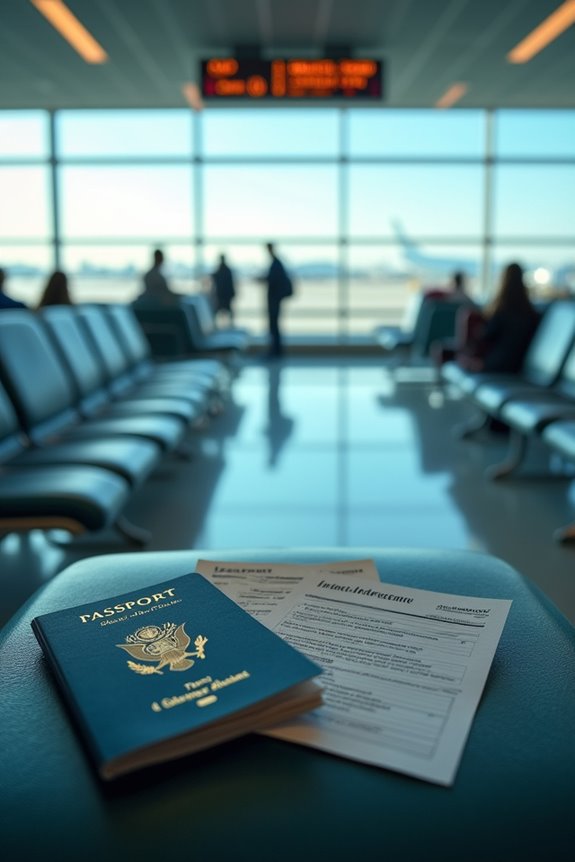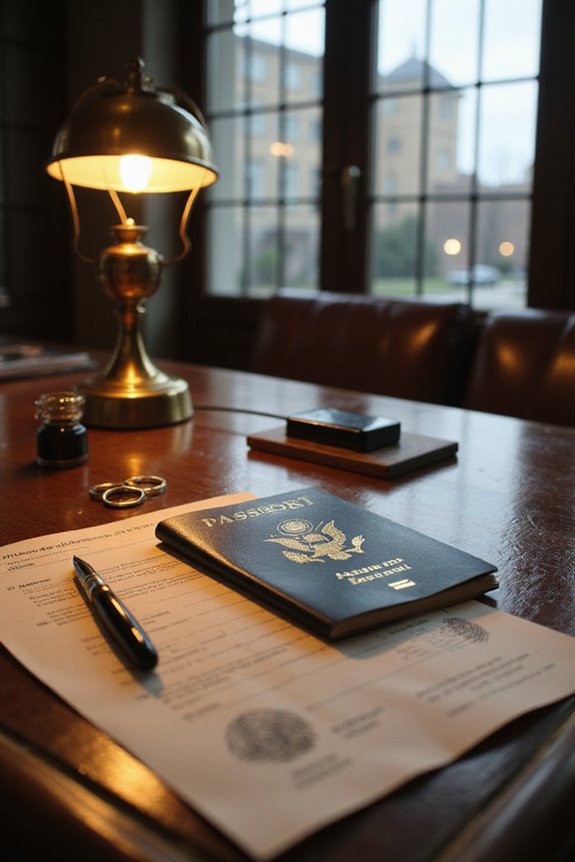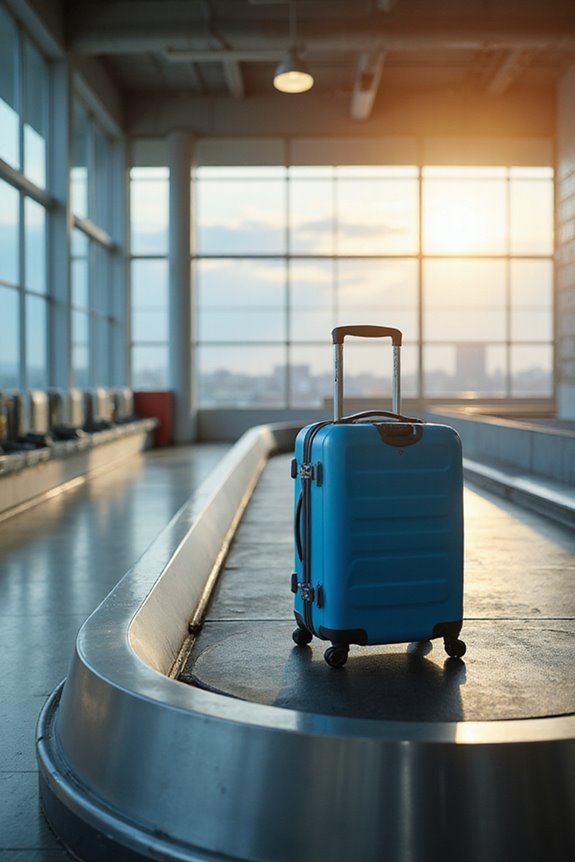So, here’s the scoop: travel insurance is like your safety net for emergencies—medical bills, trip cancellations, and baggage issues—typically costing 4-8% of your trip. On the flip side, travel protection is more about canceling for specific reasons, and it’s often cheaper but less thorough. It’s kind of like choosing between a full meal or just an appetizer at a restaurant. Want to avoid surprises and find the best fit for your next adventure? Stick around!
Key Takeaways
- Travel insurance typically covers medical emergencies and trip cancellations, while travel protection mainly focuses on cancellations for specific reasons.
- Travel insurance offers customizable options, like Cancel For Any Reason, while travel protection is often a standardized, one-size-fits-all solution.
- The cost of travel insurance usually ranges from 4-8% of the total trip cost, whereas travel protection is generally cheaper but offers limited coverage.
- Travel insurance may cover high medical costs, while travel protection often excludes medical expenses, necessitating careful review of policy exclusions.
- The claims process for travel insurance can involve more documentation and assistance, while travel protection claims may be simpler but have less support.
Regulatory Status and Oversight
When I first started looking into travel insurance, I quickly realized it wasn’t just about coverage for missed flights or lost luggage; it’s a whole universe governed by state laws and regulations. I found that regulatory clarity is essential in this domain, especially when it comes to ensuring that travel insurance products meet specific standards. But, wow, the compliance challenges! Each state has its own rules, which can make traversing the market feel like a maze. Some states follow the NAIC Travel Insurance Model Act, while others take a different approach. It’s like trying to figure out a puzzle where pieces come from various boxes. So, if you’re diving into this universe, be prepared for some twists and turns!
Scope of Coverage

Steering through the world of travel coverage can feel like a rollercoaster ride, especially after tackling the maze of regulations in travel insurance. When it comes to scope, travel insurance covers much more than just cancellations. It’s got you protected for medical emergencies, trip interruptions, and even baggage issues, with coverage limits that can reach up to a million dollars! On the flip side, travel protection is pretty limited, focusing mainly on canceling for specific reasons and often leaving you high and dry for things like medical costs. Plus, policy exclusions can really catch you off guard. It’s essential to read the fine print, so you’re not left wishing you’d packed more than just a good pair of shoes!
Cost and Value
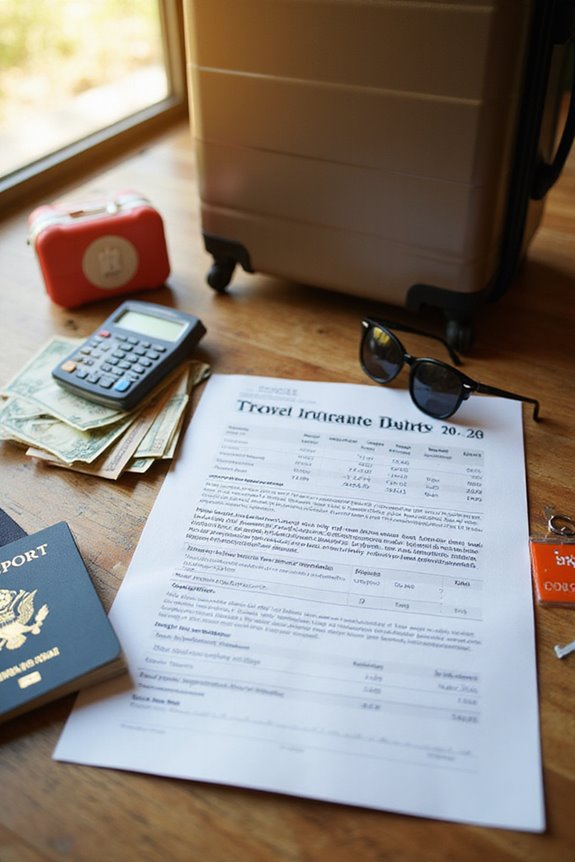
Let’s talk money—specifically, how much you’re willing to spend on travel insurance versus travel protection. I’ve found that travel insurance typically costs around 4-8% of your total trip cost, which might seem steep, but it covers medical emergencies and cancellations. Now, if you’re on a budget, travel protection is usually cheaper but only covers specific situations, like trip cancellations. When I did a premium comparison, I realized that while protection saves cash upfront, it might leave you hanging in a crisis. It’s all about risk assessment—what’s the worst that could happen? For me, the peace of mind from travel insurance is worth the extra bucks, especially when adventures can turn into unexpected misadventures!
Flexibility and Customization

After figuring out how much I’m willing to spend on coverage, the next thing that pops into my mind is how flexible and customizable that coverage can be. Travel insurance really shines here, offering a variety of coverage options like trip cancellation, medical emergencies, and even rental car damage. I love that I can add on features like Cancel For Any Reason or waivers for pre-existing conditions, giving me peace of mind tailored to my needs. On the flip side, travel protection feels like a one-size-fits-all shirt—great for cancellation fees, but not much else. So, when I think about my travels, I want that flexibility to guarantee I’m covered for anything life throws my way!
Claims Process and Assistance
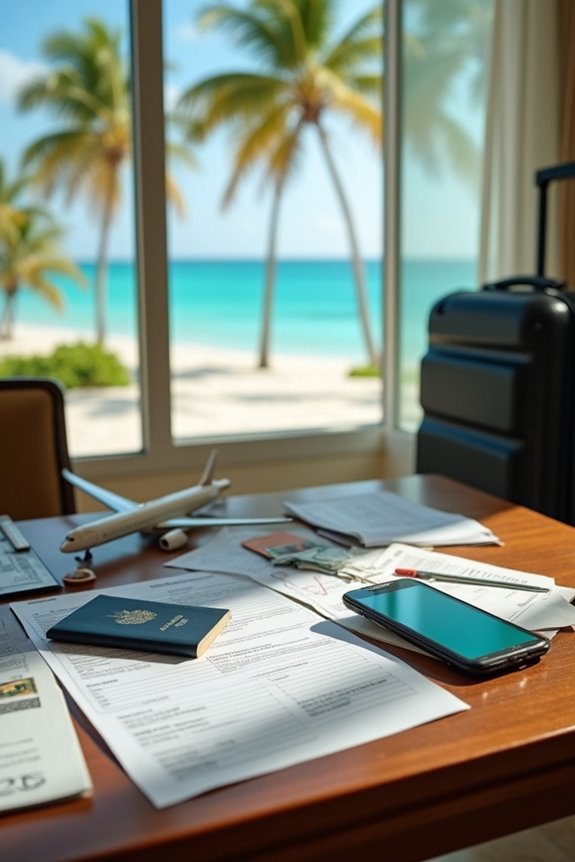
When it comes to filing a claim, I can’t help but feel a twinge of anxiety. The whole claims submission can seem intimidating, right? First off, you’ve got to gather all that pesky documentation—receipts, proof of loss, maybe even a police report if your luggage decides to take a vacation without you! Submitting claims can be done online, through apps, or even the old-fashioned way—by mail. I’ve found that digital submissions really speed things up since you can upload everything at once. Just remember, timely and accurate submission is key. If you’re missing something, it might delay your claim. But don’t worry; many insurers have friendly claim pros ready to guide you through the process!
Providers and Source of Policies
Filing a claim can be a nerve-wracking process, but once that’s behind you, it’s time to think about where to get your travel insurance or protection. I’ve found that you’ve got various provider types to choose from. Major players like Allianz and Travel Guard offer policies with features tailored for families, business travelers, or even adventure-seekers. If you’re looking for something quick, comparison sites like InsureMyTrip let you see side-by-side coverage options in minutes. Plus, some travel agencies bundle protection with trips, which can be super convenient. Just remember, whether it’s insurance or protection, it’s all about finding the right plan that fits your travel needs and gives you peace of mind while you’re away!
Key Considerations for Travelers
As you gear up for your next adventure, it’s essential to weigh your options when it comes to travel insurance and travel protection. Think about the travel risks involved—are you hiking up mountains or lounging on a beach? Travel insurance typically covers an extensive range of scenarios, from medical emergencies to baggage loss, while travel protection is more like a safety net with policy limits that can leave you hanging. I remember a trip where I needed urgent medical care; without insurance, I’d have been in deep trouble. Sure, travel protection is cheaper, but if something goes wrong, you might wish you had opted for thorough coverage. So, evaluate your needs carefully before deciding!
Frequently Asked Questions
Can I Purchase Travel Insurance After Booking My Trip?
Absolutely, you can purchase travel insurance after booking your trip! Just remember, the later you buy, the fewer coverage options you’ll have. It’s best to evaluate your booking timeline carefully to maximize your protection.
Are There Age Restrictions for Travel Insurance Coverage?
Yes, there are age restrictions for travel insurance coverage. I’ve noticed that senior coverage often has higher premiums and specific limitations, so it’s essential to check age eligibility when selecting a policy for your needs.
How Do Natural Disasters Affect Travel Insurance Claims?
Natural disasters can complicate the claim process markedly. I’ve noticed that understanding natural disaster policies is vital; they often dictate what’s covered and how quickly claims are processed after events like hurricanes or floods.
What Happens if I Cancel My Trip for a Non-Covered Reason?
If I cancel my trip for a non-covered reason, I typically won’t get a refund. I always check cancellation policies and available refund options with airlines and hotels, as they might offer credits or partial refunds.
Can Travel Insurance Cover COVID-19 Related Cancellations?
Picture a safety net catching you mid-fall. Travel insurance can indeed cover COVID-19 related cancellations, but it depends on the policy’s cancellation policies. Always check for specific COVID-19 coverage before booking your trip.

